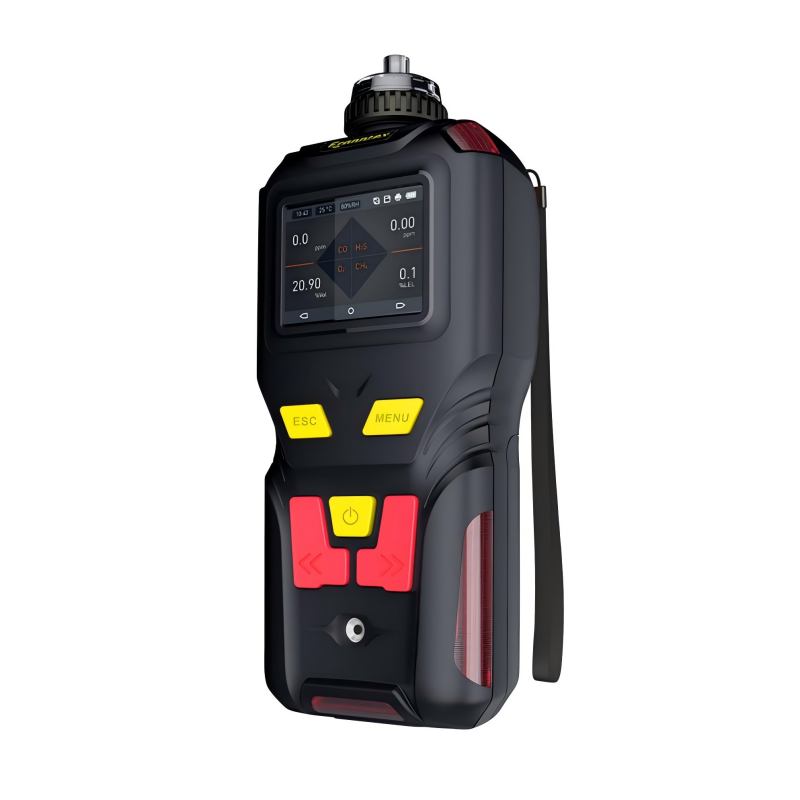- English
- Español
- Português
- русский
- Français
- 日本語
- Deutsch
- tiếng Việt
- Italiano
- Nederlands
- ภาษาไทย
- Polski
- 한국어
- Svenska
- magyar
- Malay
- বাংলা ভাষার
- Dansk
- Suomi
- हिन्दी
- Pilipino
- Türkçe
- Gaeilge
- العربية
- Indonesia
- Norsk
- تمل
- český
- ελληνικά
- український
- Javanese
- فارسی
- தமிழ்
- తెలుగు
- नेपाली
- Burmese
- български
- ລາວ
- Latine
- Қазақша
- Euskal
- Azərbaycan
- Slovenský jazyk
- Македонски
- Lietuvos
- Eesti Keel
- Română
- Slovenski
- मराठी
- Srpski језик
Is There a Specific Power Supply Requirement for Portable Oxygen Concentration Detectors? Can They Only Be Powered by Batteries?
2025-11-04
In scenarios such as chemical plant inspections, underground mining operations, and medical emergency rescue, portable oxygen concentration detectors serve as "little guardians" protecting personnel safety. They can capture real-time changes in the oxygen concentration in the environment and provide timely warnings of potential oxygen deficiency or excess risks. However, many people have questions when using them: Since they are "portable," can they only be powered by batteries? Can they be powered by an adapter for extended use? In fact, portable oxygen concentration detectors on the market offer more flexible power supply options than you might imagine. There are models that are purely battery-powered, as well as models that support dual power supply via adapters. It all depends on your actual usage needs. Below, the editor from Zetron Technology Electronics will discuss this in detail.

I. Two Common Power Supply Types
Currently, mainstream portable oxygen concentration detectors primarily employ two power supply design approaches. One is the pure battery type. These devices are powered by rechargeable lithium batteries or dry cell batteries. Their biggest advantage is maximum portability, free from power cord restrictions, making them particularly suitable for outdoor mobile testing, such as in field rescues and temporary work site inspections. Most basic models adopt this design, with battery capacities generally between 1000mAh and 3000mAh. A fully charged portable oxygen concentration detector can operate continuously for several hours to over ten hours, sufficient for short-term outdoor use. The other type is the "battery + adapter" dual power supply type. These devices, in addition to their built-in battery, also have a reserved power interface for connecting a dedicated adapter. For example, in scenarios requiring long-term operation, such as fixed monitoring points in workshops or temporary oxygen therapy areas in hospitals, connecting the adapter provides continuous power, eliminating concerns about battery depletion interrupting testing. Even when the battery is low while outdoors, connecting the adapter allows for emergency use, balancing portability and long-term operational needs.
II. Suitable Scenarios for Different Power Supply Methods
If your work primarily involves mobile monitoring, such as moving between multiple work sites daily, a battery-powered portable oxygen concentration detector is more suitable. It's lightweight, easy to carry, and eliminates the need to drag a cord. If you need to monitor a fixed location for extended periods, such as observing the oxygen environment of specific equipment, a dual-powered model (battery + adapter) is more practical. Using the adapter when stationary saves on frequent charging, and changing batteries is convenient when moving. However, it's important to note that different brands and models of detectors have different power supply designs. Some low-end or mini models may only support batteries, while mid-to-high-end models mostly offer dual power supply functionality. It's best to confirm with the seller whether it can use an adapter when purchasing to avoid buying the wrong model and inconvenience.
III. Usage Tips
Regardless of the power supply method chosen, paying attention to a few details during use can ensure the device lasts longer and is more stable. When using battery power, check the battery level frequently. Don't wait until the battery is almost depleted before charging. It's best to carry a spare battery when going out in case of a sudden power outage affecting detection. When connecting an adapter, always use the device's dedicated adapter. Do not use other models, as voltage incompatibility may damage the device.
Additionally, if the portable oxygen concentration detector will not be used for a long time, fully charge the battery and remove it for storage. Also, do not leave the adapter plugged in all the time. This will extend the lifespan of both the device and the battery. In short, portable oxygen concentration detectors are not limited to batteries. Many models can be connected to adapters; choose according to your usage scenario. Choosing the right power supply method and performing regular maintenance will ensure this "safety guardian" works stably and better protects environmental safety.







